The question of how the solar spectrum changes over time is important for providing the best light environment for crop production under controlled conditions. Light is the energy source in photosynthesis and light also serves as an important cue for developmental responses. For example, different ratios of blue, red, and far-red light can elicit changes in leaf elongation and pigmentation in the plant.
by Elsebeth Kolmos, Rick Neal & Robert Karlicek
GLASE researchers are trying to determine how the sunlight spectrum changes over the course of the day and over the seasons. To answer this question, researchers at the LESA Center at Rensselaer Polytechnic Institute have built a Spectral Acquisition Sensor System (SASSy) that can measure variations in the composition of the solar spectrum over the course of the day.
The amount of light from the sun can vary considerably and previously published GLASE research has quantified this variability. White light, including sunlight, consists of a combination of many wavelengths (Figure 1). From the bright white light of mid-day to the diminished intensity of dusk that arrive at the surface of the Earth visibly changes throughout the day. For proper plant growth, it is important to understand these changes.
Other groups are starting to consider how best to group from Technische Universität in Berlin, have created a device to measure this particular property of sunlight to control adaptive lighting systems targeted at improving user wellbeing. Additionally, researchers in Washington State are looking at spectral supplemental light to offset natural variations in sunlight spectra for better greenhouse operations.
SASSy is a step-up from long term daily light integral (DLI) measurements ordinarily used by greenhouses to control light intensity. SASSy records a full visible spectrum every 20 to 30 seconds, all day and all night. Over the long term, SASSy will provide the data necessary for comparison of visible solar spectrum year after year, day to day and season to season. With enough data it may be possible to anticipate spectral changes due to the time of day, time of year, or weather conditions in an accurate, location centric way.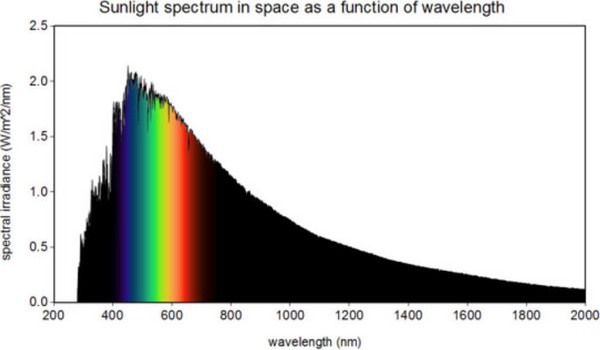
Figure 1: Graphic showing the colors of light that make up the visible spectrum.
SASSy is designed to meet the following requirements:
- Enclosure that is watertight for greenhouse locations;
- Ability to record visible light spectrum from 350 nm to 820 nm;
- Integrated shutter to perform dark measurements to compensate for drift in the detector sensitivity;
- Optically uniform borosilicate dome and cosine corrector for measurement accuracy over a wide range of incident light angles;
- Robust operation for many years.
The graphs in Figure 2 show data recorded for an outdoor location in Troy, New York on October 5th and 6th 2019. October 5th was a day with few clouds while October 6th was cloudy with the total solar energy approximately 23% (9.46 mol/m²/day) of that on October 5th (41.3 mol/ m²/day).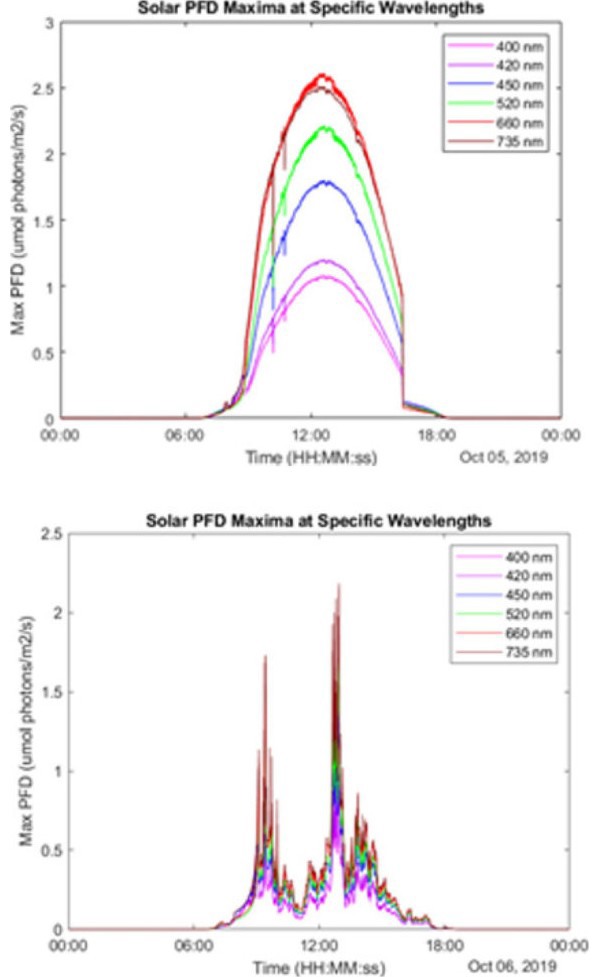
Figure 2: Photon Density at six wavelengths of interest over 24 hour periods on 10/5/19 (sunny) and 10/6/19 (mostly cloudy)
October 6th had significant spectral variability, as shown in Figure 3 where the spectra were recorded approximately 14 minutes apart at mid-day. The spectrum recorded at 12:44:03 EDT shows significantly lower light intensity between 500 nm and 700 nm as compared to the spectrum recorded at 12:57:56 EDT, likely due to moving clouds. This type of spectral change is not perceivable by eye, but would likely cause changes to plant growth.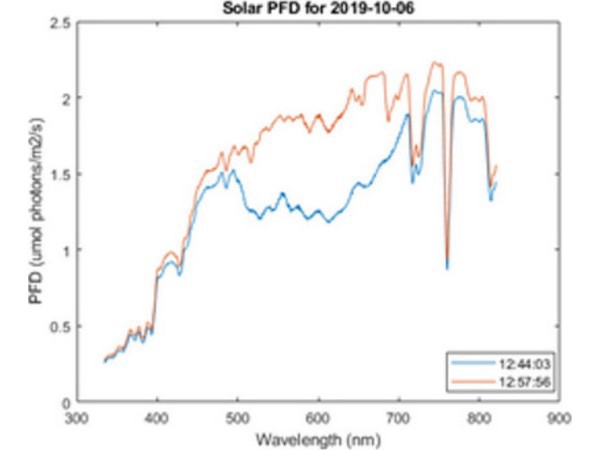
Figure 3: Two Solar PFDs recorded on 10/6/2019. The blue line was recorded at 12:44:03 EDT showing green and red deficient spectrum compared to the more typical spectrum recorded at 12:57:56 EDT.
Once we understand how the spectrum of sunlight changes over time, the next question is: how do we stabilize spectrum to grow consistent, high quality greenhouse plants? Work done by GLASE researchers at Cornell University has shown that the Lighting and Shade System Implementation (LASSI) control system is effective in regulating DLI (GLASE Technical Article – Issue 2). LASSI controls the use of shades to block sun light if it is too bright, and in addition can add supplemental light if there is too little solar energy over the course of a day. LASSI users will be able to incorporate SASSy, along with the use of color tunable LED lights to stabilize spectral changes in real time. In this way, the plants are grown under optimal light conditions and remain healthy to provide the best yield when all other conditions are optimized as well (e.g. temperature, humidity, nutrition).
Development of SASSy was completed in September 2019. It was then tested in an outdoor location in Troy, New York close the Rensselaer campus for two weeks to verify functionality and environmental tolerance.
The SASSy unit is currently recording data in a greenhouse at Cornell University. SASSy is one of the first robust spectrometer systems created for recording solar spectrum in a greenhouse over long time periods. The spectral data that SASSy provides will be instrumental in understanding the changes in solar irradiance inside the greenhouse and GLASE researchers will build upon this work to create an intelligent control system that will be able to measure the incoming light spectrum and regulate the light that the plant receives using shades and tunable LED lights.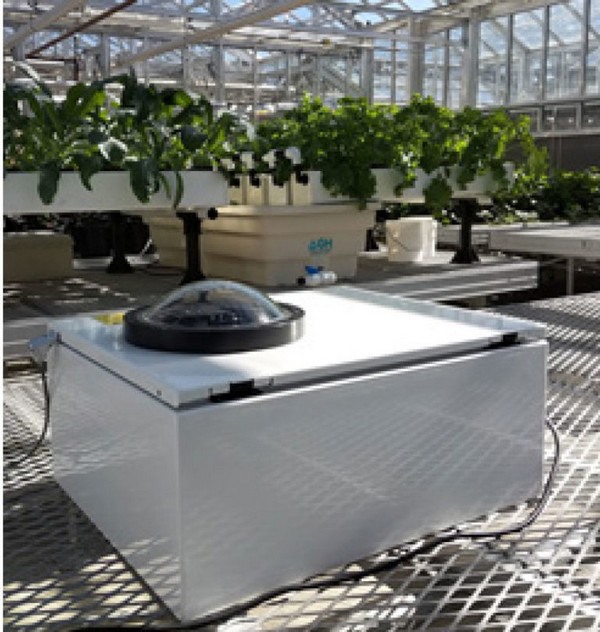
Figure 4: Image of SASSy deployed to a recording location inside a glass greenhouse at Cornell University
For more information: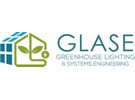 Greenhouse Lighting and Systems Engineering
Greenhouse Lighting and Systems Engineering
glase.org
